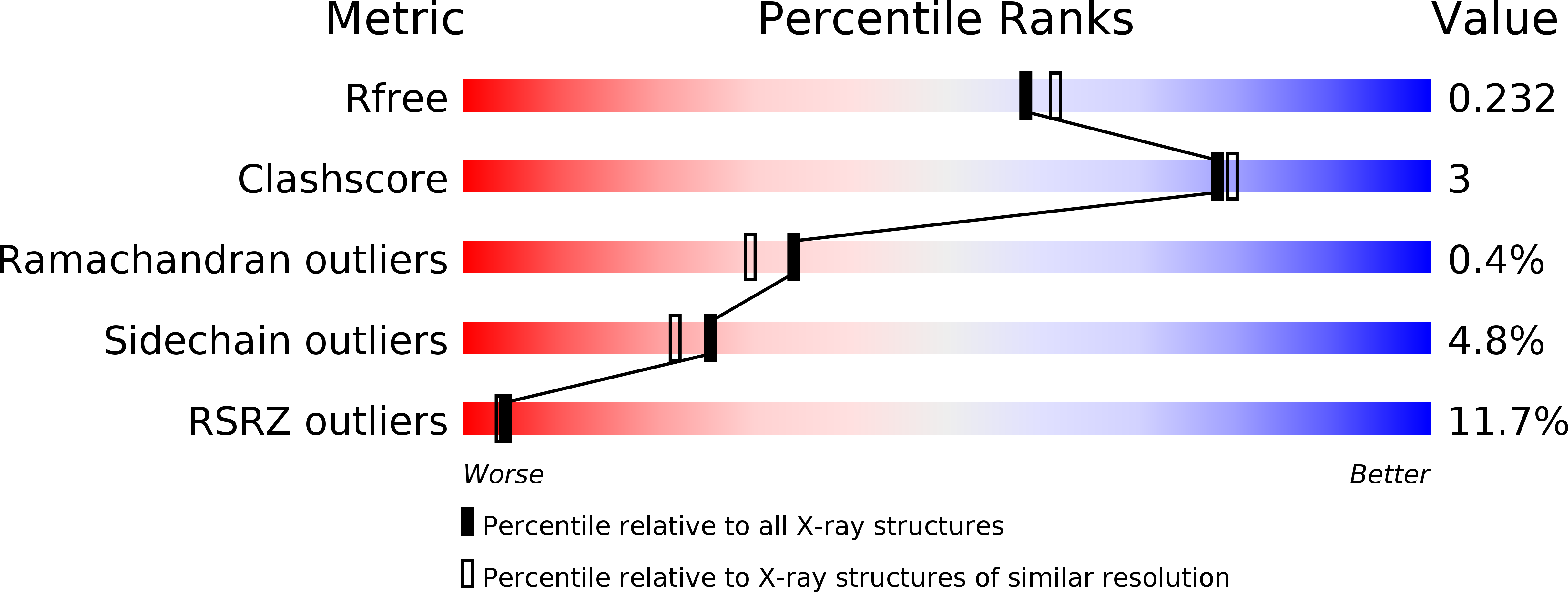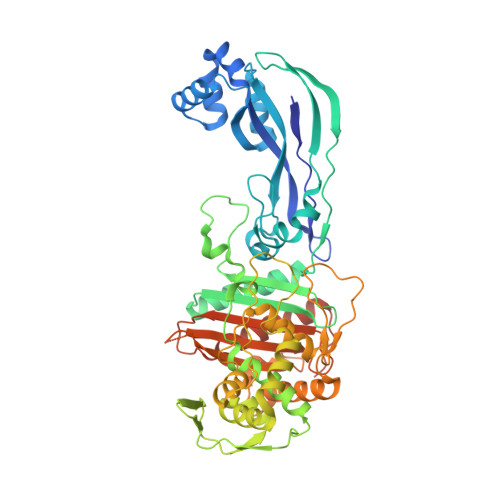Siderophore receptor-mediated uptake of lactivicin analogues in gram-negative bacteria.
Starr, J., Brown, M.F., Aschenbrenner, L., Caspers, N., Che, Y., Gerstenberger, B.S., Huband, M., Knafels, J.D., Lemmon, M.M., Li, C., McCurdy, S.P., McElroy, E., Rauckhorst, M.R., Tomaras, A.P., Young, J.A., Zaniewski, R.P., Shanmugasundaram, V., Han, S.(2014) J Med Chem 57: 3845-3855
- PubMed: 24694215
- DOI: https://doi.org/10.1021/jm500219c
- Primary Citation of Related Structures:
4OOL, 4OOM, 4OON - PubMed Abstract:
Multidrug-resistant Gram-negative pathogens are an emerging threat to human health, and addressing this challenge will require development of new antibacterial agents. This can be achieved through an improved molecular understanding of drug-target interactions combined with enhanced delivery of these agents to the site of action. Herein we describe the first application of siderophore receptor-mediated drug uptake of lactivicin analogues as a strategy that enables the development of novel antibacterial agents against clinically relevant Gram-negative bacteria. We report the first crystal structures of several sideromimic conjugated compounds bound to penicillin binding proteins PBP3 and PBP1a from Pseudomonas aeruginosa and characterize the reactivity of lactivicin and β-lactam core structures. Results from drug sensitivity studies with β-lactamase enzymes are presented, as well as a structure-based hypothesis to reduce susceptibility to this enzyme class. Finally, mechanistic studies demonstrating that sideromimic modification alters the drug uptake process are discussed.
Organizational Affiliation:
Medicinal Chemistry, ⧧Computational Chemistry, §Antibacterials Research Unit, and ¶Structural Biology, Pfizer Global Research and Development , Eastern Point Road, Groton, Connecticut 06340, United States.















